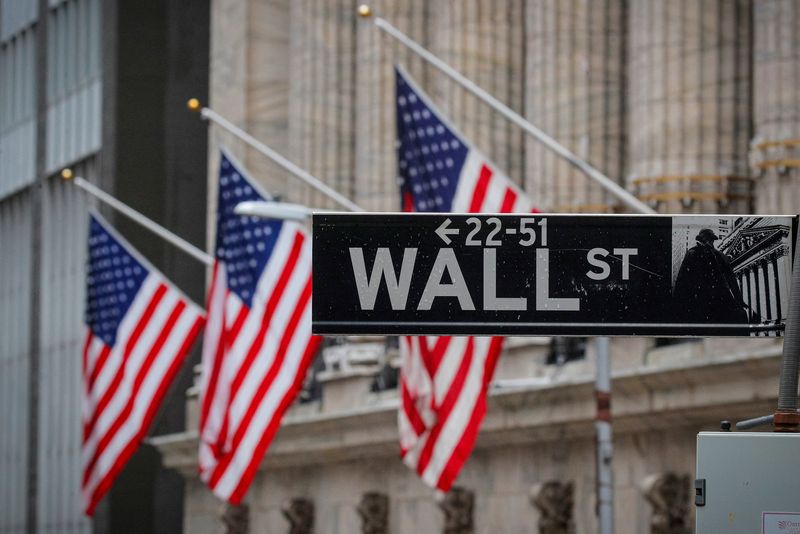These 5 Social Security Changes Are Coming in 2025 No Matter Who Wins the Election
With an election coming up in November, all eyes are on the presidential candidates and how they could shape the future of Social Security if they claim the Oval Office. However, no matter who wins the White House or control of Congress, some changes are going to happen to Social Security in 2025.
Here are five aspects of the program that will be affected regardless of who rules.
1. The size of retirees’ checks
The first big change will impact current retirees. Seniors who are receiving Social Security will see their payments get bigger next year. This is happening because automatic cost-of-living adjustments are built into the benefits program to help offset the erosion of buying power.
As prices go up, benefits do, too. A formula looks at changes to a consumer price index to determine how big the COLA will be. Pundits are currently projecting a 2.6% increase, although seniors won’t know for sure until October as the formula looks at data from the third quarter.
2. The amount you must earn to qualify for a work credit
Social Security is an “earned benefits” program. You must earn 40 work credits to become eligible for benefits, and can earn up to four credits per year. You accumulate work credits by earning and paying taxes on the income you earn. In 2024, you must earn $1,730 to qualify for one work credit. So, if you make $6,920 this year, you’ll max out the four credits you’re eligible for.
The amount you must earn to get a work credit increases each year to account for wage growth. In 2023, for example, you could earn a work credit by making just $1,640.
For those who are working but not earning a ton, it’s worth paying attention to this change that’s coming next year. You don’t want to find yourself with too few work credits to collect retirement benefits when you get older.
3. How much money you can make without affecting your Social Security benefit
If you have reached your full retirement age, you are allowed to work as much as you’d like with no impact on your benefits. That’s not changing.
However, if you’re under your full retirement age, that’s not the case. As soon as you hit a certain earnings threshold, you start to forfeit some of your Social Security payments. Eventually, the money comes back to you when your benefits are recalculated at full retirement age, but in the meantime, you could find your Social Security checks disappear if your salary is too high.
The amount you can earn before this happens is changing in 2025 (likely going up) because it’s indexed to inflation. This is good news, as it means people will be able to bring home more in a paycheck and still get benefits.
The wage limit in 2024 is $22,320. The 2025 limit has not been announced.
4. How old you must be to claim your benefit without any penalties
Near retirees will be impacted by another pretty major change in 2025, which is baked in and happening automatically.
The age at which they can claim full benefits is moving later. While those who turn 66 in 2024 can claim their full, unreduced benefits at 66 and 8 months, anyone who is not turning 66 until 2025 must wait to start their payments until 66 and 10 months. Otherwise, they will face monthly early filing penalties that apply to those who claim benefits before full retirement age.
This change was set in motion in 1983 when lawmakers passed a law requiring full retirement age to gradually move later to help improve Social Security’s struggling finances.
5. The amount of income subject to Social Security tax
This change is one that high earners may be unhappy about. The maximum income subject to Social Security tax will be higher in 2025.
Social Security caps the amount of income you pay taxes on and get credit for when benefits are calculated. The cap is $168,600 in 2024 but is indexed to inflation, so it will climb higher next year. If you make more than $168,600 in 2025, you can expect a higher Social Security tax bill next year once this limit is increased.
These changes happen because Social Security has provisions to deal with inflation and because of laws passed a long time ago. No matter who wins the election, seniors and future retirees will have to cope with the modifications, so it’s worth planning now.
The $22,924 Social Security bonus most retirees completely overlook
If you’re like most Americans, you’re a few years (or more) behind on your retirement savings. But a handful of little-known “Social Security secrets” could help ensure a boost in your retirement income. For example: one easy trick could pay you as much as $22,924 more… each year! Once you learn how to maximize your Social Security benefits, we think you could retire confidently with the peace of mind we’re all after. Simply click here to discover how to learn more about these strategies.
View the “Social Security secrets” ›
The Motley Fool has a disclosure policy.
These 5 Social Security Changes Are Coming in 2025 No Matter Who Wins the Election was originally published by The Motley Fool
Kamala Harris Supports Tax on Unrealized Capital Gains: What It Means for Wealthy Households
The Kamala Harris campaign has made one of its first concrete policy proposals this week with a tax plan. The centerpiece of the plan is a series of high-end tax increases on corporations and wealthy households worth approximately $5 trillion over 10 years. Specifically, Harris has proposed enacting the tax increases detailed in President Biden’s budget released earlier this spring.
One issue in this plan has captured specific attention: a new tax on unrealized capital gains. Biden, and now Harris, have proposed levying an annual tax on the static wealth of households worth more than $100 million. Specifically, households worth more than $100 million would pay an annual minimum tax worth 25% of their combined income and unrealized capital gains.
This is known as a “wealth tax,” and the goal is to tax wealthy households that increasingly avoid taxation by living off unsold and unrealized assets. However, unrealized capital gains means that the asset has not been sold, and thus a price has not been locked in for the benefit of the asset-holder. This means that taxes may be paid on value that is never received by the owner, ultimately disincentivizing long-term investments by wealthy households. Here’s what to know.
A financial advisor can help you navigate the nuances of changing tax legislation and build a plan that suits your goals.
What Are Unrealized Capital Gains?
Unrealized capital gains occur when the value of an asset increases over its cost basis (typically the purchase price) while it is held unsold. This can be thought of as theoretical profits. For example, say that you purchase an equity for $10 per share. The next day, the price increases to $12 but you do not sell. That $2 difference is an unrealized capital gain. While your net worth may have increased by $2, it remains at risk to change further unless you sell the equity.
Realized capital gains occur when an asset is actively sold for more than its cost basis. The resulting profits from the sale are considered the realized gains.
Realized capital gains have a final, known value. They are the recorded amount of a fixed transaction, while unrealized capital gains fluctuate. They reflect the state of an asset at any given time while it is held unsold. So, in our example above, say your equity is worth $12 per share on July 1, and you sell it for $14 per share on August 1. You would have a $2 unrealized capital gain on July 1, and a $4 realized capital gain on August 1.
Capital gains apply to all capital assets. This is a broad category that most commonly includes financial securities and real estate
What Are Realized Capital Gains Taxes?
Capital gains taxes are taxes that apply any time a capital asset is sold for a profit. Currently, there are no taxes on unrealized capital gains. The taxable event requires a transaction. It occurs at the time of the sale and is based on the realized gains or losses relative to the cost basis (in general, the purchase price of the asset).
This tax has long been a contested issue in American politics and economics, as capital gains (generally the income generated from passive investment) are taxed at a significantly lower rate than earned income (the income generated from labor and work).
Specifically, capital gains are taxed at 0%, 15% and 20%, and the highest bracket begins at profits over $500,000. By contrast, earned income is taxed at up to 37%, depending on your annual income level. For example, the 22% income tax bracket for 2024 begins at $47,150 of annual income.
Proponents of this system argue that it encourages investment and growth. By reducing taxes on investments, the government can incentivize business creation, land development and other economically productive activities. Proponents also argue that this system constitute double-taxation as it is, since investors use money they earned (and therefore was taxed) to buy the underlying securities.
Critics argue that this system encourages rent-seeking behavior rather than productive investment, since investors are incentivized toward passive returns on investment assets. They argue that there is no double taxation since investors only pay taxes on their profits, and that the special status for capital gains creates an unfair system in which millionaire investors pay less in taxes than low-income workers.
A financial advisor can help you build a tax-efficient strategy based on your goals and circumstances. Get matched with a fiduciary advisor today.
How Would an Unrealized Capital Gains Tax Work?
Alongside the debate over realized capital gains, some policymakers and some economists have begun to suggest a tax on unrealized capital gains. This is a tax on the value of a portfolio’s unrealized gains. Each year, eligible households would calculate the growth of their portfolio and would owe a portion of that increased value in taxes.
This is otherwise known as a “wealth tax.”
Under the Harris/Biden proposal, all households with more than $100 million in net assets would pay a minimum tax of 25% on their combined income and unrealized capital gains. This would most likely be assessed as of the end of the year.
So, for example, say that a household holds a portfolio of stocks with a $50 million tax basis. On December 31, those shares are now worth $125 million. They also have an annual income of $1 million in cash and $10 million worth of stock options.
As a household worth more than $100 million, this proposed minimum tax would apply. They would have unrealized capital gains of $75 million ($125 million current price – $50 million cost basis). They would have another $1 million of income, with their stock options likely exempted from income taxes. As a result, they might owe up to $19 million in taxes (0.25 * $76 million). However, one problem with this is that as unrealized gains, the value of that $125 million securities investment may go back down to the original $50 million value – or even below it – at any given time. This would mean the household paid a 25% tax rate on value it may have never received.
The details of this proposal remain speculative. Neither the Biden Administration nor the Harris campaign have said exactly how they would like to enact or enforce this policy. Since no jurisdiction has passed a wealth tax on securities, there is no working template to work from. This would particularly raise valuation and enforcement questions when it comes to taxing private and illiquid assets, in which pricing is more speculative than with high-volume public assets like public stocks and bonds.
Consider matching with a financial advisor for professional help with tax management and beyond.
The Debate Around Wealth Taxes
The idea of a wealth tax has gained increasing traction in recent years.
The perceived problem that these policymakers are trying to solve is that, increasingly, very wealthy households operate without ever selling their assets. They are frequently paid in stock and options, often untaxed. They access cash and property through loans secured by those assets, which are again untaxed, and asset swaps.
This practice, known as “buy, borrow, die,” means that the very wealthy may be able to circumvent some taxes, operating without ever triggering a taxable event. It also means that ever-more wealth keeps being effectively locked up indefinitely, idling in portfolios to be used as collateral.
Some economists have proposed solving this with the estate tax. There are two main criticisms of that approach however: First, while not a dead letter, the estate tax collects less and less revenue every year. Second, the estate tax offers much less flexibility than a revenue-based tax, as it only allows taxation after the semi-unpredictable event of an individual’s death.
This has lead to a growing embrace of taxing unrealized capital gains. Proponents argue that a wealth tax will is the only way to tax ultrawealthy households, which would otherwise continue their current practice of indefinitely holding untaxed assets. This would generate revenue and, by forcing a liquidity event, return many of those assets to the market.
There is significant criticism around the idea of a wealth tax, however. One of the most significant question remains a legal one. Critics argue that the federal government does not have the authority to tax individual assets outside of a transaction. This argument is primarily based on the Fifth Amendment Taking’s clause, which reads in relevant part “nor shall private property be taken for public use, without just compensation” and on the Direct Taxation Clause of the Constitution which reads, in relevant part, “No Capitation, or other direct, Tax shall be laid, unless in Proportion to the Census or enumeration herein before directed to be taken.”
Most Constitutional scholars believe that these arguments are weak, and political more than legal.
Anti-tax advocates have attempted to the Takings Clause to argue against the constitutionality of many taxes, including the income tax, for years without success. The Direct Taxation Clause is more ambiguous. The Supreme Court has never defined what actually constitutes a “direct” vs. an “indirect” tax. There is no clear authority to argue that a wealth tax would trigger this clause, and any such holding would likely come in conflict with many other areas of the tax code. The closest modern authority on this issue comes from a 2024 case Moore vs. USA in which the Court upheld a tax on undistributed foreign assets.
Beyond the legal criticisms, there are significant questions about the implementation and enforcement of a wealth tax. As noted in the example in the previous section, unrealized gains can quickly become unrealized losses, meaning taxes could be imposed even though a household does not actually receive the full benefit or ownership of the money they are taxed on.
And as the Tax Policy Center notes, any wealth tax would have to address complicated assets including businesses and real estate holdings, and tax-avoidance strategies such as trusts and corporations. These are not necessarily fatal problems for a wealth tax, as any tax scheme must address complex assets and avoidance, but they must be addressed in order for this idea to become a mature proposal.
For more information on how you can best plan your tax strategy and navigate any legislative changes, consider consulting a financial advisor.
The Bottom Line
The Harris campaign has fully endorsed a tax plan put forth by President Biden’s administration. This plan proposes to raise revenues by around $5 trillion, in part by levying taxes on unrealized capital gains for households worth more than $100 million. This is known as a wealth tax, and it has become an increasingly debated topic in recent years.
Tips On Managing Your Taxes
-
You don’t need to own your own yacht to want to save on taxes. Heck, minimizing your taxes might even help you buy that boat someday. So let’s start talking about smart ways to reduce your taxes, strategies you can use right now.
-
A financial advisor can help you build a comprehensive retirement plan. Finding a financial advisor doesn’t have to be hard. SmartAsset’s free tool matches you with up to three vetted financial advisors who serve your area, and you can have a free introductory call with your advisor matches to decide which one you feel is right for you. If you’re ready to find an advisor who can help you achieve your financial goals, get started now. You can also check out SmartAsset reviews.
-
Keep an emergency fund on hand in case you run into unexpected expenses. An emergency fund should be liquid — in an account that isn’t at risk of significant fluctuation like the stock market. The tradeoff is that the value of liquid cash can be eroded by inflation. But a high-interest account allows you to earn compound interest. Compare savings accounts from these banks.
-
Are you a financial advisor looking to grow your business? SmartAsset AMP helps advisors connect with leads and offers marketing automation solutions so you can spend more time making conversions. Learn more about SmartAsset AMP.
Photo credit: Grok, ©iStock.com/JoeyCheung, ©iStock.com/courtneyk
The post Kamala Harris Supports Tax on Unrealized Capital Gains: What It Means for Wealthy Households appeared first on SmartReads by SmartAsset.
Prediction: These Will Be the Best-Performing S&P 500 Stocks of 2024
You’ve likely heard some form of the disclaimer, “Past performance is no guarantee of future results.” And the statement is true. However, I’d add something to the disclaimer: “But a big head start is nearly always a good thing.”
Several large-cap stocks have a big head start that could enable them to finish the year strong. I predict these will be the three best-performing S&P 500 (SNPINDEX: ^GSPC) stocks of 2024.
1. Nvidia
Nvidia (NASDAQ: NVDA) currently ranks as the biggest year-to-date winner in the S&P 500. Shares of the GPU maker have skyrocketed over 150%. I don’t think Nvidia will give up its top spot by the end of 2024.
On Aug. 12, I predicted that Nvidia stock would jump another 20% or more by year-end. My prediction has almost come true already. One reason why is that some of the factors weighing on Nvidia aren’t as worrisome now.
More importantly, though, Nvidia has yet to announce its fiscal 2025 second-quarter results. The company is scheduled to provide its Q2 update on Aug. 28. I fully expect another blow-out quarter for Nvidia, which will fuel investor optimism.
I also think the company will reassure investors about the timing of the launch of its Blackwell-based chips. Blackwell is Nvidia’s newest GPU architecture that CEO Jensen Huang believes will be the most successful product in the company’s history.
2. Super Micro Computer
Super Micro Computer (NASDAQ: SMCI), commonly referred to as Supermicro, ranks as the S&P 500’s second-best stock so far this year. Shares of the information technology infrastructure company have soared around 115%. I expect Supermicro will add to that gain over the next few months.
Will Supermicro’s upcoming 10-for-1 stock split on Oct. 1 provide a big catalyst? Maybe, but I wouldn’t count on it. Even if there is a boost from the split, it could only be a temporary one.
The smarter reason to look for a continued strong performance from Supermicro is the tailwind generated by artificial intelligence (AI). In the fourth quarter of Supermicro’s fiscal 2024, the company generated revenue of $5.31 billion. It projects revenue of between $6 billion and $7 billion in fiscal 2025 Q1. That’s a 22% increase in just three months — and much of it stems from AI-related demand.
Supermicro could also benefit from Nvidia’s launch of its Blackwell chips. Even if there’s a worse-than-expected delay with this launch, though, Supermicro CEO Charles Liang doesn’t think his company will be affected too much because of the overall demand for its liquid-cooling solutions.
3. Eli Lilly
I’m going out on a limb with my next pick. Three S&P 500 stocks are currently performing better than Eli Lilly (NYSE: LLY) in addition to Nvidia and Supermicro. However, I have a hunch this big pharma stock could leap past them to end the year as the No. 3 stock in the S&P.
My bullish view about Lilly is based largely on my great expectations for the company’s tirzepatide franchise. In the U.S., the drug is marketed under the brand name Mounjaro for treating type 2 diabetes and under the brand name Zepbound for treating obesity. Outside the U.S., it’s marketed as Mounjaro for both indications. Whatever you call it, tirzepatide is already an enormously successful blockbuster drug. Mounjaro raked in $3.09 billion in sales in Q2, while Zepbound made $1.24 billion.
Investors also know that Lilly could have more indications for tirzepatide on the way. The U.S. Food and Drug Administration (FDA) could make an approval decision on the drug in treating obstructive sleep apnea and obesity by the end of 2024. Lilly plans to file for regulatory approvals of tirzepatide in treating heart failure with preserved ejection fraction (HFpEF) and obesity later this year.
We can’t overlook Lilly’s recently FDA-approved Alzheimer’s disease drug, Kisunla. I don’t look for jaw-dropping sales numbers from the therapy in the second half of the year. However, more regulatory approvals outside the U.S. are possible by the end of 2024. And if U.S. sales are better than expected, Kisunla could provide more reason for investors to be excited about Lilly’s growth prospects.
Should you invest $1,000 in Nvidia right now?
Before you buy stock in Nvidia, consider this:
The Motley Fool Stock Advisor analyst team just identified what they believe are the 10 best stocks for investors to buy now… and Nvidia wasn’t one of them. The 10 stocks that made the cut could produce monster returns in the coming years.
Consider when Nvidia made this list on April 15, 2005… if you invested $1,000 at the time of our recommendation, you’d have $758,227!*
Stock Advisor provides investors with an easy-to-follow blueprint for success, including guidance on building a portfolio, regular updates from analysts, and two new stock picks each month. The Stock Advisor service has more than quadrupled the return of S&P 500 since 2002*.
*Stock Advisor returns as of August 22, 2024
Keith Speights has no position in any of the stocks mentioned. The Motley Fool has positions in and recommends Nvidia. The Motley Fool has a disclosure policy.
Prediction: These Will Be the Best-Performing S&P 500 Stocks of 2024 was originally published by The Motley Fool
If Warren Buffett's Son Didn't Sell His 90K Berkshire Hathaway Inheritance 47 Years Ago To 'Buy Time,' He Would Have This Much Today
Peter Buffett, the son of legendary investor Warren Buffett, made a life-altering decision 47 years ago when he traded his inheritance “to buy time.” Although he missed out on what could have been hundreds of millions of dollars in profit, he stands by his choice, confident that his father would agree.
Don’t Miss:
Finding His Path: At 19, Buffett received a portion of the proceeds from the sale of his grandfather’s farm, which his father invested in Berkshire Hathaway Inc. (NYSE:BRK) (NYSE:BRK), amounting to $90,000, according to CNBC. His father made it clear that this was all the financial support he would receive for personal use. Despite knowing it was his entire inheritance, Peter sold his Berkshire stock to fund his passion for music.
See Also: Don’t miss out on the next Nvidia – you can invest in the future of AI for only $10.
Buffett dropped out of Stanford University, purchased a modest studio apartment in San Francisco, and invested in upgrading his recording equipment. He dedicated his time to honing his piano and music production skills.
His big break came unexpectedly when a neighbor asked him about his profession, setting him on the path to a successful career in music.
Trending: Mark Cuban believes “the next wave of revenue generation is around real estate and entertainment” — this new real estate fund allows you to get started with just $100.
He told the neighbor that he was a “struggling composer” and the neighbor offered to introduce him to his son-in-law who was an animator looking for ad tunes for a new cable station — it turned out to be MTV.
Buffett is now 66 years of age and has released around 15 studio albums over his successful career.
Trending: This Jeff Bezos-backed startup will allow you to become a landlord in just 10 minutes, and you only need $100.
The Path Not Taken: If the son of the legendary investor would have stayed in college and held onto his $90,000 investment in Berkshire Hathaway, it would be worth over $400 million today.
“But I didn’t make that choice and I don’t regret it for a second. I used my nest egg to buy something infinitely more valuable than money: I used it to buy time,” Buffett said.
That’s a decision that his father would be proud of, he noted. The billionaire taught his son that work isn’t about making as much money as possible, instead it’s about doing something that you love to do.
Trending: How do billionaires pay less in income tax than you? Tax deferring is their number one strategy.
Buffett acknowledged that the money was a privilege, calling it a gift that he had not earned.
“Without those hundreds of unpaid hours spent fiddling with my recording gear, I would not have found my sound or approach,” Buffett said.
The musician used the money to buy time to pursue something that he enjoys waking up and doing each day, which is exactly what his father tells young people to do. The billionaire has previously recommended that people pursue careers they would want even if money was not part of the decision-making process.
Check This Out:
This story is part of a new series of features on the subject of success, Benzinga Inspire. Some elements of this story were previously reported by Benzinga and it has been updated.
“ACTIVE INVESTORS’ SECRET WEAPON” Supercharge Your Stock Market Game with the #1 “news & everything else” trading tool: Benzinga Pro – Click here to start Your 14-Day Trial Now!
Get the latest stock analysis from Benzinga?
This article If Warren Buffett’s Son Didn’t Sell His 90K Berkshire Hathaway Inheritance 47 Years Ago To ‘Buy Time,’ He Would Have This Much Today originally appeared on Benzinga.com
2 High-Yield Energy Stocks to Buy Hand Over Fist and 1 to Avoid
For dividend investors, one of the most important things to know about the energy sector is that it is very volatile. That means that dividend-paying energy stocks should go through a little extra scrutiny before being added to your portfolio.
A great example of the problem income investors face when looking for energy investments is Devon Energy (NYSE: DVN). Meanwhile, Chevron (NYSE: CVX) and Enterprise Products Partners (NYSE: EPD) are solid examples of the gems that you can unearth in the energy sector when you dig in just a little bit.
Devon Energy’s dividend history isn’t shocking
Devon Energy is what is known as an upstream company, which means that it produces oil and natural gas. In this case, the company operates exclusively in the onshore U.S. space, but that’s not the most salient factor here.
What is important to understand is that its top and bottom lines are driven almost entirely by energy prices. Oil and natural gas prices are highly volatile, and so Devon’s financial results are also highly variable.
This isn’t a bad thing, per se. It is pretty much par for the course when you are looking at an upstream company. For dividend investors, however, there’s an added wrinkle. Devon’s dividend is variable, with the final payment tied to the company’s financial results.
Even though the dividend yield is listed at 4.4% on major online quote services, investors should expect the actual income received to vary greatly over time. In some ways, the variable dividend policy is a good way to ensure that shareholders are rewarded when energy prices are high, but the downside is that dividend cuts are inevitable.
For most income investors Devon Energy isn’t going to be a good stock to own.
Chevron is a reliable dividend payer
If you are looking for a reliable dividend payer with a long history of annual increases behind it, you’ll probably be better off with Chevron. For starters, it is much more diversified. Its business encompasses the upstream, the midstream (pipelines), and all the way to the downstream (chemicals and refining).
The company’s energy portfolio is also globally diversified. And it happens to be one of the largest energy companies on the planet with a $260 billion market cap. Chevron’s dividend yield is also around 4.4%.
The energy company has increased its dividend annually for 37 consecutive years despite the inherent volatility of the sector. A big part of the story here is its rock-solid balance sheet, with a debt-to-equity ratio of just 0.14 times.
That would be strong for any company, but it gives Chevron the leeway to take on debt during industry downturns so it can support its business and dividend. When energy prices recover, as they always have historically, it pays down the debt in preparation for the next energy sell-off.
If you are looking for an energy producer with a reliable dividend, Chevron is one of the best options you’ll find.
Enterprise is a boring high yielder
If Chevron’s exposure to oil and natural gas production is a bit too troubling for you, there are still some energy options out there. One of the most reliable is Enterprise Products Partners, a master limited partnership (MLP) that operates a large portfolio of midstream infrastructure assets.
Generally speaking, it charges fees for the use of these assets so the price of the oil and natural gas that flows through its system isn’t really that important to its financial results.
This is highlighted by the fact that the company has increased its distribution annually for 26 consecutive years. And there’s more to like here. Specifically, the balance sheet is investment-grade, and cash flow covers the distribution by a strong 1.7 times. There is a lot of room for adversity before a distribution cut would be on the table.
That said, Enterprise’s hefty 7% or so distribution yield is likely to make up the lion’s share of returns over time. This is because there are limited growth prospects in the midstream sector.
But bolt-on acquisitions, expansions of existing assets, small ground-up capital projects, and regular rate increases within its existing portfolio will likely lead to slow and steady growth over time. And that, in turn, should support ongoing distribution growth.
The best options for income in energy
Dividend investors need to understand the impact that the energy sector’s high volatility will have on their investments. Both Chevron and Enterprise have proved they know how to handle the industry’s ups and downs while continuing to reward investors well over time.
That said, Devon Energy isn’t a bad company, but it has chosen a very different dividend approach that inherently means shareholders will see dividend cuts. If you are looking for a reliable income stream in the energy sector, Chevron and Enterprise will be much better choices.
Should you invest $1,000 in Devon Energy right now?
Before you buy stock in Devon Energy, consider this:
The Motley Fool Stock Advisor analyst team just identified what they believe are the 10 best stocks for investors to buy now… and Devon Energy wasn’t one of them. The 10 stocks that made the cut could produce monster returns in the coming years.
Consider when Nvidia made this list on April 15, 2005… if you invested $1,000 at the time of our recommendation, you’d have $758,227!*
Stock Advisor provides investors with an easy-to-follow blueprint for success, including guidance on building a portfolio, regular updates from analysts, and two new stock picks each month. The Stock Advisor service has more than quadrupled the return of S&P 500 since 2002*.
*Stock Advisor returns as of August 22, 2024
Reuben Gregg Brewer has no position in any of the stocks mentioned. The Motley Fool has positions in and recommends Chevron. The Motley Fool recommends Enterprise Products Partners. The Motley Fool has a disclosure policy.
2 High-Yield Energy Stocks to Buy Hand Over Fist and 1 to Avoid was originally published by The Motley Fool
'Super Bowl' Nvidia earnings stand to test searing AI trade
By David Randall
NEW YORK (Reuters) – The rally in U.S. stocks faces an important test next week with earnings from chipmaking giant Nvidia (NVDA), whose blistering run has powered markets throughout 2024.
The S&P 500 has pared a sharp drop it suffered after U.S. economic worries contributed to a sell-off at the beginning of the month and again stands near a fresh all-time high.
Nvidia, whose chips are widely seen as the gold standard in artificial intelligence, has been at the forefront of that rally, jumping by more than 30% since its recent lows. The stock is up some 150% year-to-date, accounting for around a quarter of the S&P 500’s 17% year-to-date gain.
The company’s Aug. 28 earnings report, coupled with guidance on whether it expects corporate investments in AI to continue, could be a key inflection point for market sentiment heading into what is historically a volatile time of the year. The S&P 500 has fallen in September by an average of 0.78% since World War Two, the worst performance of any month, according to CFRA data.
“Nvidia is the zeitgeist stock today,” said Mike Smith, a portfolio manager at Allspring Global Investments, which holds the company’s shares in its portfolios. “You can think of their earnings four times a year as the Super Bowl.”
Some investors are getting ready for fireworks. Traders are pricing in a swing of around 10.3% in Nvidia’s shares the day after the company reports earnings, according to data from options analytic firm ORATS. That’s larger than the expected move ahead of any Nvidia report over the last three years and well above the stock’s average post-earnings move of 8.1% over that same period, ORATS data showed.
The results come at the end of an earnings season during which investors have taken a less forgiving view of big tech companies whose earnings failed to justify rich valuations or prodigious spending on AI. Examples include Microsoft, Tesla and Alphabet, whose shares are all down since their July reports.
Nvidia’s valuations have also climbed, as the stock soared about 750% since the start of 2023, making it the world’s third-most valuable company as of Thursday, while also drawing comparisons to the dotcom bubble of more than two decades ago. The company’s shares trade at about 37 times forward 12-month earnings estimates, compared with a 20-year average of 29 times, according to LSEG Datastream.
Market sentiment could depend as much on Nvidia’s guidance as its results. Evidence that it sees robust demand will be a bullish sign that companies are continuing to invest rather than pull back in anticipation of an economic slowdown, said Matt Stucky, chief portfolio manager, equities, at Northwestern Mutual Wealth Management.
Nvidia’s “connection to the largest companies in the U.S. stock market makes this a must-watch event,” he said. “The biggest piece that investors want to know is whether there is sustainability and what demand will look like in ’25 and ’26,” he said.
The trajectory of monetary policy and the U.S. economy also looms large for investors. In a Friday morning speech in Jackson Hole, Wyoming, Federal Reserve Chair Jerome Powell offered an explicit endorsement of interest rate cuts, saying further cooling in the job market would be unwelcome.
Investors will be watching U.S. labor market data on Sept. 6 for evidence of whether last month’s unexpected downshift in employment carried over to August. Signs that employment is continuing to weaken could bring back the recession fears that rocked markets earlier this month.
A tight presidential race between Vice President Kamala Harris, a Democrat, and Republican former President Donald Trump may also whip up market uncertainty in the weeks ahead.
The August surge in stocks may make it difficult for markets to make much more headway in the near term even if Nvidia’s earnings impress Wall Street, said John Belton, a portfolio manager at Gabelli Funds, which holds shares of the chipmaker.
The S&P 500 trades at 21 times expected earnings, far above its long-term average of 15.7.
“The stock market as a whole is still trading at stretched valuations so the bar remains high,” Belton said.
(Reporting by David Randall; Additional reporting by Lewis Krauskopf and Saqib Iqbal Ahmed; Editing by Ira Iosebashvili and Jonathan Oatis)
Walgreens Is Reportedly Considering a Drastic Move to Improve Its Cash Flow
When a company is in a tough financial situation, all options are on the table. For the sake of keeping its operations afloat and ensuring its long-term safety, a company may drastically cut expenses and even abandon once-promising growth opportunities. Cash comes first.
Walgreens Boots Alliance (NASDAQ: WBA) is a company that may be in urgent need of strengthening its cash position. Its cash flow isn’t great, it’s still paying a dividend, and investors have simply been losing hope in the company as a result of its underwhelming financials. Not only is it considering asset sales, but it’s also contemplating a significant move: dumping its stake in VillageMD.
Walgreens has invested billions into its healthcare strategy
In 2021, Walgreens took a majority stake in primary care operator VillageMD when it made a $5.2 billion investment in the company. The move was a strategic one, which involved plans to launch 1,000 health clinics by 2027. Walgreens was hoping to cash in from its position of being a trusted neighborhood pharmacy for millions of Americans.
By launching health clinics at its existing locations, the idea was to incentivize shoppers to visit pharmacies more often and ultimately spend more, driving higher revenue. A year later, VillageMD announced plans to acquire Summit Health, a medical practice, with Walgreens helping to fund the near-$9 billion purchase, adding another $3.5 billion to its investment in the primary care company.
But the growth strategy hasn’t been smooth. In Walgreens’ most recent quarterly results, which ended in May, it incurred an operating loss of $220 million in its U.S. healthcare segment, which includes VillageMD’s results. It was the only one of Walgreens’ main segments that incurred a loss during the period. And earlier this year, Walgreens wrote down its investment in VillageMD by nearly $6 billion.
Will Walgreens dump its entire stake in VillageMD?
In a recent filing, Walgreens has indicated that it is contemplating the “sale of all or part of the VillageMD businesses, possible restructuring options and other strategic opportunities” as it notes that there are “substantial ongoing and expected future cash requirements.” This comes as VillageMD has defaulted on a $2.25 billion loan facility that Walgreens provided the primary care operator with.
For Walgreens to go through with selling its position in VillageMD would undoubtedly be a significant one as it would signify a big change in its growth strategy. But given the challenges VillageMD is facing and the already significant writedown Walgreens has recognized, it’s debatable just how much a sale might bring in for the business. However, by simply abandoning this cash-intensive strategy, Walgreens could put itself in a better financial position in the long run.
Investors may recall that earlier this year, low-cost operator Walmart announced it would abandon its healthcare strategy after concluding it was too difficult and costly to compete in. If a deep-pocketed company like Walmart struggled to provide low-cost healthcare options, it’s definitely not a good sign for Walgreens.
Investors should hold off on buying Walgreens stock
On the profitability front, Walgreens is still juggling with various business segments, and unfortunately, a lot of balls are still in the air. THere’s no clarity what Walgreens may or may not end up doing. Even if it sells its stake in VillageMD, that won’t necessarily solve all of its problems. Margins remain low, growth is nearly non-existent, and the dividend looks unsustainable.
Walgreens stock is down around 60% this year, but until the business shows a significant improvement in its financials and it has better prospects for profitability and growth, investors are still better off avoiding the healthcare stock as it’s likely far too risky for most portfolios.
Should you invest $1,000 in Walgreens Boots Alliance right now?
Before you buy stock in Walgreens Boots Alliance, consider this:
The Motley Fool Stock Advisor analyst team just identified what they believe are the 10 best stocks for investors to buy now… and Walgreens Boots Alliance wasn’t one of them. The 10 stocks that made the cut could produce monster returns in the coming years.
Consider when Nvidia made this list on April 15, 2005… if you invested $1,000 at the time of our recommendation, you’d have $787,394!*
Stock Advisor provides investors with an easy-to-follow blueprint for success, including guidance on building a portfolio, regular updates from analysts, and two new stock picks each month. The Stock Advisor service has more than quadrupled the return of S&P 500 since 2002*.
*Stock Advisor returns as of August 22, 2024
David Jagielski has no position in any of the stocks mentioned. The Motley Fool has positions in and recommends Walmart. The Motley Fool has a disclosure policy.
Walgreens Is Reportedly Considering a Drastic Move to Improve Its Cash Flow was originally published by The Motley Fool
Why Cameco, Ur-Energy, Uranium Royalty, and Uranium Energy Stocks Are Soaring Today
Uranium stocks are ending the week on a strong note, with shares of Cameco (NYSE: CCJ) stock up 5.8% through 10 a.m. ET and smaller rivals Ur-Energy (NYSEMKT: URG), Uranium Royalty (NASDAQ: UROY), and Uranium Energy (NYSEMKT: UEC) doing even better — up 8.2%, 9.9%, and 12.7%, respectively.
And all four of these nuclear stocks have just one company to thank for their rallies: Kazakhstan’s Kazatomprom.
What Kazatomprom said today
As The Financial Times pointed out this morning, Kazatomprom (literally an abbreviation of “Kazakhstan atomic industry”) is the world’s largest producer of uranium for nuclear power. Problem is, it’s planning to become a smaller producer of uranium as early as next year.
Citing “project delays and sulphuric acid shortages,” Kazatomprom cut its uranium production target for 2025 by 17%, to a range of 25,000 to 26,500 metric tons. With Kazatomprom responsible for roughly 20% of world output, that means that global supplies of uranium — which were already constrained thanks to Russia’s war in Ukraine — will fall by another 3% to 4% next year.
Worse, FT cites a Canaccord Genuity analyst warning that Kazatomprom’s forecast could turn out to be optimistic. Canaccord estimates that Kazatomprom will produce closer to 23,000 tons of uranium next year, constricting global supplies even further.
Further, Canaccord observed that Kazatomprom has very few reserves to blunt the impact of a 2025 production cut. Rising demand for uranium has depleted the company’s reserves of uranium already mined and ready for shipment by 31% so far this year.
Should you buy uranium stocks?
Long story short: Kazatomprom can’t produce enough uranium to meet global nuclear power plant needs, so other uranium producers will need to increase their own production to fill the gap. The good news for investors is that this will mean higher prices for uranium and probably more profits for those who own shares in Cameco, Ur-Energy, Uranium Royalty, and Uranium Energy — at least for a time.
According to Trading Economics data, the spot price on uranium today sits just under $80 per pound, down from roughly $105 per pound in February. That’s already comfortably above the $60-per-pound price that economists peg as necessary to encourage production, which has been trending higher. Higher prices and the prospect of fatter profits are only going to encourage uranium miners to mine more.
What will higher production mean for the companies doing the producing? In the short term, it should mean higher profits as companies sell more uranium at higher prices.
Rising prices have already turned profitable Cameco (last year), Uranium Royalty stock (this year), and Uranium Energy (last year, although it began losing money again this year). Ur-Energy, meanwhile, still hasn’t booked an operating profit since 2018. As prices keep rising, there’s a good chance more of these stocks will become more consistently profitable — at least until rising production creates oversupply and starts driving prices back down again. This is a cyclical industry, after all, and investors can’t enjoy a boom without anticipating a bust lying in wait just around the corner.
So what’s your best bet to play this trend?
I have to think it’s to buy Cameco first of all, while keeping a watchful eye on the others. Of the four uranium stocks discussed here, it’s got the best record of profitability (having earned positive net profits in six of the past 10 years). It’s also the only uranium stock currently generating positive free cash flow.
At a price-to-free-cash-flow ratio of 45, Cameco stock is not cheap. But if you absolutely, positively feel you must invest in the uranium rally today, Cameco still seems the safest way to do that.
Should you invest $1,000 in Cameco right now?
Before you buy stock in Cameco, consider this:
The Motley Fool Stock Advisor analyst team just identified what they believe are the 10 best stocks for investors to buy now… and Cameco wasn’t one of them. The 10 stocks that made the cut could produce monster returns in the coming years.
Consider when Nvidia made this list on April 15, 2005… if you invested $1,000 at the time of our recommendation, you’d have $758,227!*
Stock Advisor provides investors with an easy-to-follow blueprint for success, including guidance on building a portfolio, regular updates from analysts, and two new stock picks each month. The Stock Advisor service has more than quadrupled the return of S&P 500 since 2002*.
*Stock Advisor returns as of August 22, 2024
Rich Smith has no position in any of the stocks mentioned. The Motley Fool recommends Cameco. The Motley Fool has a disclosure policy.
Why Cameco, Ur-Energy, Uranium Royalty, and Uranium Energy Stocks Are Soaring Today was originally published by The Motley Fool
US crackdown on advanced chips gives China an opening on old technology
Since 2022, the US has been hyperfocused on restricting Chinese production of high-end semiconductors. The Commerce Department has imposed stifling export controls and allocated tens of billions of dollars to incentivize advanced chip production in the US.
In response, China has forged its own policy — and it has a heavy focus on less advanced but widely used “legacy” chips. New data shows that Beijing is gaining leverage in that market quickly.
China is now on track to install three times as much chipmaking capacity this year as all other countries plan to do over the next three years combined, according to Silverado Policy Accelerator, a nonprofit think tank. The country is poised to control roughly 40% of overall legacy chip production by 2027, according to a study by the Rhodium Group.
“What China’s doing in that segment of the market is what it has done in many other industries,” Sarah Stewart, CEO of Silverado, told Yahoo Finance. “They are infusing that segment of the market with … below-market loans [and] all sorts of subsidies that are not offered by anybody else. None of that is tethered to any true demand signal.”
China’s efforts have raised fears that the semiconductor industry could be at risk of following in the path of the solar and steel industries, where overcapacity in China contributed to a collapse in global prices.
Price pressures are already building. Silverado’s report shows that Chinese firms offered prices that were 20% to 30% lower than their non-Chinese competitors in 2022 and 2023. Those discounts came despite strong industry pricing, particularly in 2022, when a broad semiconductor shortage led to record sales.
While Chinese-made chips are still largely used to supply the domestic market, steep discounts have helped firms like Semiconductor Manufacturing International Corporation (SMIC), Hua Hong (1347.HK), and Nexchip (688249.SS) wrestle market share away from non-Chinese competitors including GlobalFoundries (GFS) and Samsung, according to consulting firm JW Insights.
China accounted for roughly a third of global legacy chip production last year, nearly double that of 2015, according to the Rhodium Group. It’s is expected to increase that capacity to 39% by 2027.
New vs. old
Although advanced chips represent the most cutting-edge technology, their usage is contingent on a foundation built by older semiconductors.
The Commerce Department defines these legacy chips as semiconductors built on nodes that are 28 nanometers or larger. They are considered foundational because they are critical to nearly every electrical device, from smartphones to household appliances, medical equipment, and military vehicles.
For example, a smartphone uses 160 to 170 chips, but just three of those are considered advanced, according to Silverado’s research. GPS, Wi-Fi, battery life, and camera controls are just a few of the functions dependent on legacy chips.
“There’s virtually no application that requires an advanced chip that can work without a foundational set of chips,” Stewart said. “They go hand in hand.”
Yet Biden officials have focused their efforts on producing advanced chips over legacy ones, largely because China lags far behind in that technology.
The Commerce Department announced a combined $3.4 billion in investments to build on US capacity to produce legacy chips, according to official data. That’s one-third of the incentives that have been allotted for leading-edge semiconductors.
National security is one reason for the emphasis on denying China advanced chips. Commerce Secretary Gina Raimondo has said the administration’s export controls are intended to thwart Chinese advancements in artificial intelligence, military systems, and mass surveillance.
“Supercomputing, AI technology, AI chips in the wrong hands is as deadly as any weapon that we could provide,” Raimondo said at the Reagan National Defense Forum last year.
China ramps up manufacturing
China has sought to build out its domestic semiconductor industry for years, pouring billions of dollars into homegrown players.
The current acceleration can be traced back to 2019, when the Commerce Department placed telecommunications giant Huawei on the entity list, cutting off access to critical suppliers including Google (GOOG), Qualcomm (QCOM), and Broadcom (AVGO) overnight.
The 2022 export controls, which all but banned American companies from supplying advanced chips and cutting-edge chipmaking equipment to China, only supercharged the country’s efforts.
Stewart said China capitalized on Washington’s policy by ramping up production of legacy chips with the intention of expanding the country’s global market share, gaining leverage over the US, and controlling prices.
Central to the effort is China’s National Integrated Circuits Industry Development Investment Fund, which has raised $52 billion to develop semiconductor fabrication and design in 10 years with a focus on older chips, according to a report by Semiconductor Industry Association and BCG. It aims to raise $40 billion more by the end of the decade.
The industry has expanded on the backs of Western companies too. China was the largest global importer of semiconductor manufacturing equipment in 2023, importing $15 billion more than its closest competitor, Taiwan, according to Silverado.
Renewed fears over legacy chips
China’s increased production capacity has raised alarm bells among policymakers and industry leaders.
This month, California lawmakers signed a letter urging the Commerce Department to pause unilateral export controls, saying further controls “could send longstanding US companies into a death spiral.”
Some, including Intel CEO Pat Gelsinger, have warned about the repercussions of broad export controls, saying that too many restrictions risked accelerating China’s timeline for chip production.
“If that line is too restrictive, then China has to build its own chips,” he said, speaking at Computex in Taiwan.
Earlier this year, the Commerce Department launched a review of the country’s supply chains to get a better grasp on how US companies are sourcing foundational chips.
And a few months ago, the Department of Defense imposed its own procurement restrictions on government agencies, banning them from using China-sourced chips starting in 2027. The National Defense Authorization Act also banned transactions with entities that use Chinese chips in critical defense and intelligence system products.
The European Commission has also taken note, surveying companies to better understand how Chinese firms are using older chips to undermine them, according to multiple reports.
According to Reva Goujon, a director at the Rhodium Group, countering China’s semiconductor ambitions will ultimately require additional policy support and cooperation among US allies.
“The US needs to effectively create an ex-China market for chips to guarantee demand among US and trusted partners,” said Goujon. “The sustainability of the AI boom is a major variable, as is the US election. Either a Harris administration carries through that plurilateral momentum or we see further fracturing and leaky controls from a Trump 2.0 polarization of partners.”
Click here for the latest technology news that will impact the stock market
Read the latest financial and business news from Yahoo Finance
Prediction: 2 Stocks That'll Be Worth More Than Apple 10 Years From Now
In the world of finance, 10 years is the blink of an eye. Want proof? Take a close look at the table below:
|
Company |
2014 Market Cap (in billions) |
2024 Market Cap (in billions) |
|---|---|---|
|
IBM |
$182 |
$178 |
|
Nvidia |
$10 |
$2,965 |
In August 2014, IBM‘s market cap was roughly 18 times larger than Nvidia‘s (NASDAQ: NVDA). But oh, how the tables have turned. Today, Nvidia boasts a market cap of about $3 trillion — roughly 17 times larger than IBM.
So, looking ahead to the next 10 years, what are the companies that could surpass Apple‘s enormous market cap? Here are two that could pull it off.
Microsoft
If a company is going to surpass Apple over the next decade, it will need a gigantic market cap. Even assuming Apple’s market cap holds steady, that would mean a company would need to reach a market cap of $3.4 trillion to catch Apple.
That’s a very tall order, and there are only so many companies that could do it. Microsoft (NASDAQ: MSFT) is one of them.
For starters, Microsoft already has a market cap of $3.1 trillion as of this writing. As recently as June, Microsoft did have a market cap larger than Apple. What’s more, Microsoft holds a few competitive advantages that should, over time, help the company’s market cap ease past Apple.
First, Microsoft has a more diversified business. The company has its hands in cloud computing, gaming, advertising, hardware, software, social networking, and artificial intelligence (AI). In short, Microsoft has many pathways to success. Apple, on the other hand, has traditionally benefited from its excellent hardware innovation. And while Apple services and AI could boost the company’s revenue, flagging iPhone sales could present a real challenge to Apple over the next decade.
In my book, that means an advantage for Microsoft.
Nvidia
I have reservations about Nvidia right now. Its sky-high valuation makes it vulnerable to a nasty correction if the company’s sales show any signs of slowing. That said, this article is about what could happen over the next 10 years. And in that case, I think Nvidia is well positioned to surpass Apple.
That’s because Nvidia’s core business — making the graphics processing units (GPUs) that will power cutting-edge AI systems for the next decade — is on a long-term growth trajectory that Apple simply can’t match.
Sales of Apple’s signature product — the iPhone — grew every year between 2007 and 2015, but they’ve been flat since then.
Nvidia, on the other hand, is still growing. Over the last two years, the company has tripled its revenue as GPUs have sold like hotcakes. That growth isn’t likely to slow in the next few years. Most analysts expect Nvidia’s sales to double again to around $160 billion by 2026.
Sure, there are likely to be some bumps in the road as the competitors take some market share from Nvidia in the red-hot AI chips market. But even if Nvidia’s sales growth slows, it could easily close the $500 billion market cap difference between it and Apple over the next decade.
Should you invest $1,000 in Microsoft right now?
Before you buy stock in Microsoft, consider this:
The Motley Fool Stock Advisor analyst team just identified what they believe are the 10 best stocks for investors to buy now… and Microsoft wasn’t one of them. The 10 stocks that made the cut could produce monster returns in the coming years.
Consider when Nvidia made this list on April 15, 2005… if you invested $1,000 at the time of our recommendation, you’d have $758,227!*
Stock Advisor provides investors with an easy-to-follow blueprint for success, including guidance on building a portfolio, regular updates from analysts, and two new stock picks each month. The Stock Advisor service has more than quadrupled the return of S&P 500 since 2002*.
*Stock Advisor returns as of August 22, 2024
Jake Lerch has positions in International Business Machines and Nvidia. The Motley Fool has positions in and recommends Apple, Microsoft, and Nvidia. The Motley Fool recommends International Business Machines and recommends the following options: long January 2026 $395 calls on Microsoft and short January 2026 $405 calls on Microsoft. The Motley Fool has a disclosure policy.
Prediction: 2 Stocks That’ll Be Worth More Than Apple 10 Years From Now was originally published by The Motley Fool










